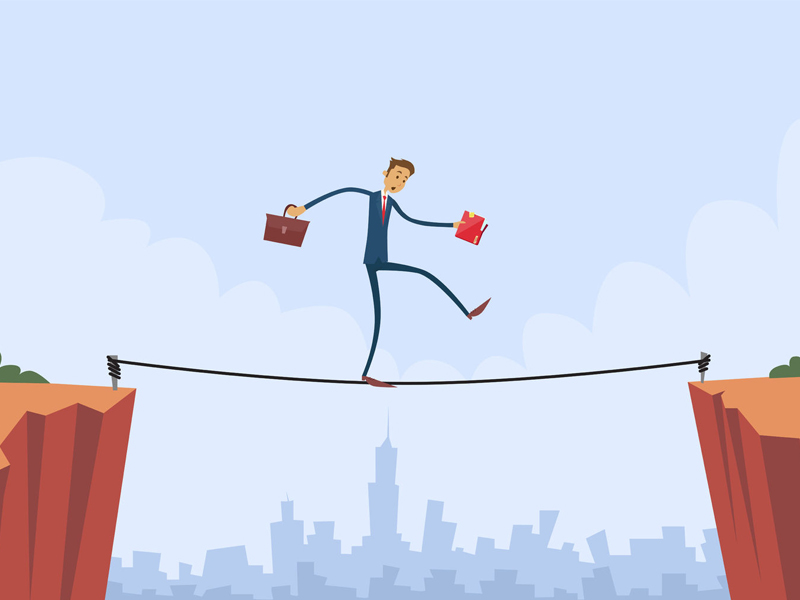
Finding safe haven in bonds is becoming more difficult as the yield curve becomes a lot flatter. The critical spread between two- and 30-year U.S. treasuries now is 42 basis points (bps) compared with an average of 196 bps during the previous five years. Thus, the question for financial advisors and their clients now is where to invest in this very flat yield curve and get a decent return from bonds to take cover if and when stock prices tumble?
Given that bond prices move up when stock prices go down, the choice is between sticking with global, but mainly U.S., stocks late in the current bull market or taking low returns in bonds as diversification. Yet, bonds have their own risks embedded in today’s very flat yield curves in both Canada and the U.S.
The elephant in the room is the massive and increasing U.S. government debt. That debt was US$14.7 trillion at the end of 2017, according to data from the U.S. Department of the Treasury, and is predicted to rise to US$28.7 trillion 10 years from now, according to Statista, a Germany-based global statistics firm. Someone is going to have to foot this bill. Chances are that the Treasury will choose to sell this debt in short-term bills, raising the chance of an inverted yield curve, which is often an omen of recession.
“A day of reckoning is coming,” predicts Richmond Hill, Ont.-based Canso Investment Counsel Ltd ’s September Corporate Bond Newsletter. The reasoning for this is that massive U.S. government debt will inevitably force interest rates upward as U.S. government credit quality deteriorates. The timing, however, is uncertain.
The overarching risk is that when credit markets retrench, investors would seek liquidity and cash in their investments, as they did in 2008. Long bonds would be sold off just to raise cash even though central bank stimulus moves — lowering interest rates — would tend to push bond prices up higher.
The largest foreign holder of U.S. debt is China. For reasons both political, given the state of tariff wars, or just practical, seeking more yield than the flat U.S. yield curve offers, China could sell U.S. bonds. But that’s not likely to happen, says Chris Kresic, head of fixed-income and asset allocation at Jarislowsky Fraser Ltd. in Toronto: “I doubt that China would sell its U.S. treasuries. They would shoot themselves in the foot. In addition, they could cause weakness in the U.S. dollar, which would only help increase U.S. exports.”
For now, major players are on the sidelines waiting for the yield curve to make a significant move. Says Andrew Grantham, senior economist with CIBC World Markets Inc. in Toronto: “What we have now is caution, not complete risk-off mentality. If you have a pessimistic outlook for the future, the risk is a recession. That situation justifies investing in bonds, but if the return you anticipate goes below 2%, you will not hold to maturity.”
Staying fairly short allows a switch to longer maturities or back to stocks when stock multiples return to reason, Grantham notes. Charles Marleau, president of Palos Management Inc. in Montreal, agrees: “On the yield curve, I want to be short in a one- to five-year ladder. That gives me an average term of 2.5 years and very low duration. It’s a safe place to be.”
The duration of the five-year bond ladder is 0.039. In other words, even if interest rates for one- to five-year bonds rise by an average of 100 bps, exposure to losses would be about 4% of the face value of the bond. On the other hand, the price of safety is low returns. Staying short would get a client through any liquidity crisis. The cost would be foregone yield.
Renowned capital markets scholar Jeremy Siegel, professor of finance at the University of Pennsylvania’s Wharton School in Philadelphia, noted in the fifth edition his book, Stocks for the Long Run, that when holding bonds for a period of one year, they outperform stocks just 40% of the time. That time could be coming. The question remains where to find haven on the yield curve. With a flat yield curve, the opportunity cost of going long is low, but the risk of losses is high if inflation picks up and long-term interest rates rise.
This is the fourth in a four-part series of fixed-income investing.